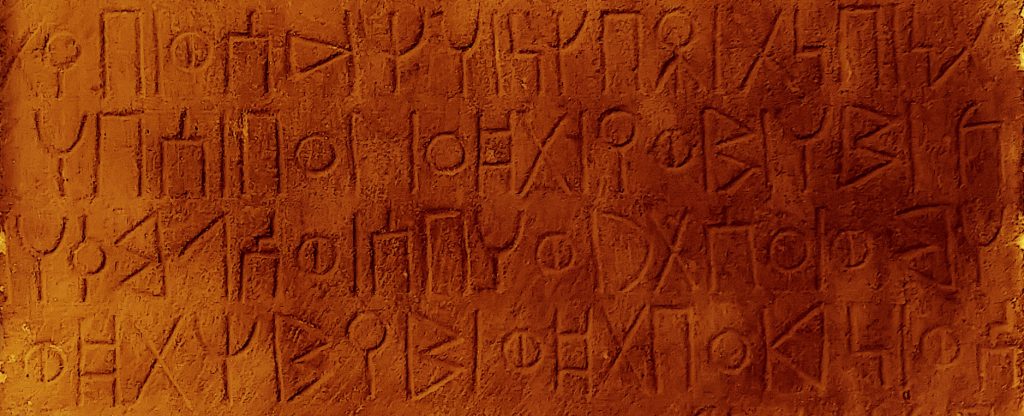Ethiopia History
The History of Ethiopia covers from the early prehistoric times to the present. The land of our Human ancestors, Ethiopia was prominent of civilization in the Red sea world and one of the most powerful nations, that has attracted the interest of historians
Prehistoric Period
The Prehistoric Periods dated from about five million years ago, to 5,000 years ago. It is a period where our ancestors made evolutionary, cultural and economic changes. It is a period where our ancestors began upright walking, developed culture, made tools, began husbandry of Animals and Farming until they started writing Languages. Ethiopia is believed to be the source of Human ancestors / hominid but it is the discovery of Lucy on Nov. 24, 1974. In a place called Hadar by a young American researcher Donald Johansson that consolidates Ethiopia as the first place mankind were dwelling. Since then a lot of finding has been unearthed, Fossils older than Lucy, such asArdipithecus ramidus or Ardi in short. It is an early human-like female anthropoid 4.4 million years old and a lot of stone stools have been uncovered in a different part of the country like Gona and Melka kuntre.

Damat Kingdom

Kingdom Damat or Dʿmt is The Earliest Known kingdom from 10 BC to 5 BC, it’s Capital was believed to be at Yeha, Tigray region North Ethiopia. They were polytheism or believe in different Gods. They share many similarities in religion, cultures, and writing languages with the Sabean people of southern Arabian. There are very few inscriptions and Archaeological Evidence about the kingdom. As a result, it is not known whether the kingdom of Damat / Dʿmt ended before the Kingdom of Aksum’s or evolved into the Aksumite Kingdom.
Axumite Kingdom

From 1st BC the Axumite kingdom starts to flourish from its’ capital Axum. They were great Warriors to able to conquer their surrounding small kingdoms and Ruled as far as Yemen. Axumites ables to control the trade route of the region and becomes the major commercial player between ancient India and the Roman Empire. In the second century, Axum reached its Zenith to become one of the four major Global powers of the time, among Persia, Rome, and china. The three major religions of the world Judaism, Christianity, and Islam introduced from the Middle East to Ethiopia at their earliest time to Axum.
Ethiopian Queen Quine of Sheba Visited Jerusalem to meet King Solomon and learn His Wisdom. later she got pregnant A son from Him. The son of Solomon is called Menilik I. When he reached 22 he visited his father and learned Judaism. On his way back home he brought the Ark of the Covenant the Holiest Item in the bible. This is still found at Axum St. Mary Zion church. Menilik I Established the Solomonic Dynasty which ruled Ethiopia until 1974.
Christianity Was introduced to the country during the 1st century when Philip the apostle baptized Eunuch, The highest palace court official of Queen Candace of Ethiopia. Christianity became the official religion of the country in 334 AD during the time of King Ezan. Since then Ethiopian orthodox church was under the Egyptian Coptic orthodox church, became an Independent church during the time of Emperor Haile Silase I with a lot of diplomacy and effort in 1959.
The first followers of Mohamed Escaped prosecution by the Quraish to get refugees and protected by the Axumite Empire. Later Islam flourished in Coastal areas of the country with trade it ale to penetrate to spread along the eastern part of the country.
Arabs become strong traders and major competitors in the region. later they control the trade by destroying the major port of Axumite Kingdom Adulis, which Cemented the decline of the Axumite Empire.
A local Jewish Queen named Yodit Gudit (Judith) starts a war against the Axumite kingdom and defeats the empire. It is considered as Dark Age, The War led to the destruction of the Axumite civilization, Left its Towns, monasteries, and churches burned to Ashes. The kingdom retreats to the southern part of the country to have a safe haven with the holiest Items, the Arc of the Covenant around 940.
The collapse of Aksumite power was a gradual process. It began towards the close of the seventh century and ended in the middle of the ninth century accompanied by the southward shift of the Aksumite political center.
Zagwe dynasty of the Medieval Period
In the middle of the ninth century, the political center was located in Lasta, South of Axum. Where the Aksumite kings lost their power to the Zagwe dynasty. The Zagwe kings came from the ruling class of the Agew people who belong to the Kushitic linguistic group. Ruled Ethiopia from Lalibela, Lasta province from 9000 to 1270. The rise of Zagwe is credited to a General called Mara Takla Haymanot who revolt against the Last King of Axum to overthrow King Dil Naod and Established the Zagwe Dynasty In the 10th century and married to his daughter. The Zagwe Dynasty Emperors were very religious. Most of the kings were priests and kings at the same time. The main achievement of the Zagwe period was in the field of architecture mainly associated with Church building. The churches built during the Zagwe period are still standing in Lalibela and they are one of the cultural heritage of the world Recorded by UNESCO.
The most famous of them is King & St. Lalibela who is credited for chiseling out the famous Lalibela Rock-hewn churches from a single bed Rock. St. Lalibela constructed very unique churches in the world.
According to a sacred book called Kibre Negest (Glory of Kings) it is the male side who is in line with the throne with a bloodline of Queen of Sheba and King Solomon legitimate to the Throne. Around 1270 the power transferred to Yikunno Amlak, who claims his ancestry through his father, Tesfa Iyasus to the last, King of Axum . He claimed the Zagwe kings don’t have a direct bloodline from the ancient Axumite kingdom that descended from Queen of Sheba and King Solomon. The last, king killed by Yikunno Amlak and his followers.
Yikunno Amlak and his followers named their dynasty “Solomonic”. They took this name to justify their claim to legitimacy, which strongly implied that the Zagwe rulers were usurpers. The highland Christian kingdom had been in hostile relations with all of the Muslim neighboring states. This was because of the interest of the Christian kingdom in controlling trade and trade routes between the Ethiopian highlands and the Red Sea coast. This became a root cause of the armed conflict between the Christian kingdom and the Muslim sultanates.
By the beginning of the sixteenth century, the dominance of the Christian kingdom had already come to an end. The balance of power had shifted to the side of the Muslim sultanates. Among the Muslim sultanates, the leading power was the sultanate of Adal, which became very strong during the reign of Ahmad b. Ibrahim al-Ghazi. Ahmad Ibrahim defeated the Christian kingdom and almost all states of the Ethiopian region and the Horn of Africa. Consequently, Adal established its hegemony over the peoples and states of ‘the Ethiopian region and the Horn of Africa for about 15 years. The military conflict between the Christian kingdom and the sultanate of Adal had led to the intervention of Portugal and Ottoman Turkey. At the time, the two superpowers of the world Ottoman Turkey supported the sultanate of Adal, while Portugal fought on the side of the Christian kingdom. The Portuguese military assistance to the Christian kingdom played a very decisive role in bringing about the final defeat of the army of Adal in 1543, which marked the end of the dominance of the sultanate in the Ethiopian region and the Horn.
Gonderian period
The Christian kings ruled the provinces from a mobile court. They did not have permanent capital. It was during the reign of Fasiledes (1632-1667) that the kingdom got a permanent capital city at Gondar in 1636. Since then, Gondar became the political, economic and cultural center of the kingdom for almost two centuries. Because of this, the period between 1632 and 1769 is commonly known as the Gondarine period.

The Royal Enclosure of Gonder built at this time. Inside the quarter, magnificent castles for kings, residences for the Abun as well as churches were built. The architectural style of the buildings contained many elements from the Aksumite and the Zagwe periods. A number of churches were also built outside the imperial quarter. These churches became the main centers of education, music, and poetry. By the late eighteenth Century Gondar had about 70,000 inhabitants who belonged to different religions and cultural groups Gondar also became the center of an active trade.
Modern Period
Emperor Tewdros from Gondar came on power in 1955, he starts modernization of Ethiopia with a vision to unify the country. His unifications idea has proceeded with his successors Emperor Yohanis and Emperor Minilik the II. Emperor Menelik made all most the present-day Map of Ethiopia and he was the first person to open school, Hospital, railroad open postal service, and telecommunication in the country. Not only had this but he also established Addis Ababa the capital city of Ethiopia. Ethiopia has never been colonized; Emperor Minilik defeated the Italian colonizers in the Battle of Adwa in 1896. It was the first black Victory against any colonial, which makes Ethiopia as a symbol of freedom for many African countries. Some even adopt the country flag (green, yellow, red) into their flag. Emperor Hailesilase a son of Ras Mekonen, The battle of Adwa General and a foreign minister of Emperor Minilk become Emperor of Ethiopia in 1930 shortly Italia Invade Ethiopia again 1936. With a lot of struggle and suffering, the Italians moved out in 1941. After coming back victories Emperor Hailesilase starts the reconstruction of the country opened hospitals, established factories, opened schools he even gave away his palace to establish the first university of the country but this was not enough for the people.

The students make movement demanding land reformation ( Land for the Tenner’s). The Militaries’ called Themselves Derg (committee) took advantage to overthrow Emperor Hailes Silase from His Throne in 1974. Ethiopia became a socialist Republic ruled by Militaries in Iron Fist. In 1992 The Military Government defeated by a coalition of Rebel groups called EPRDF.
Now, Ethiopia is one of the fastest-growing economies in the world, a big market with 100 million population, most of them are young.
